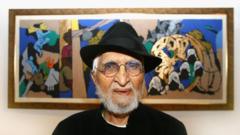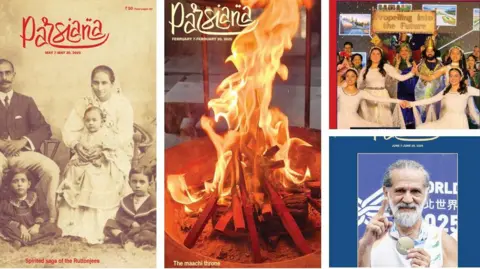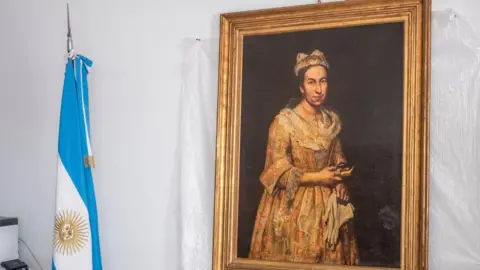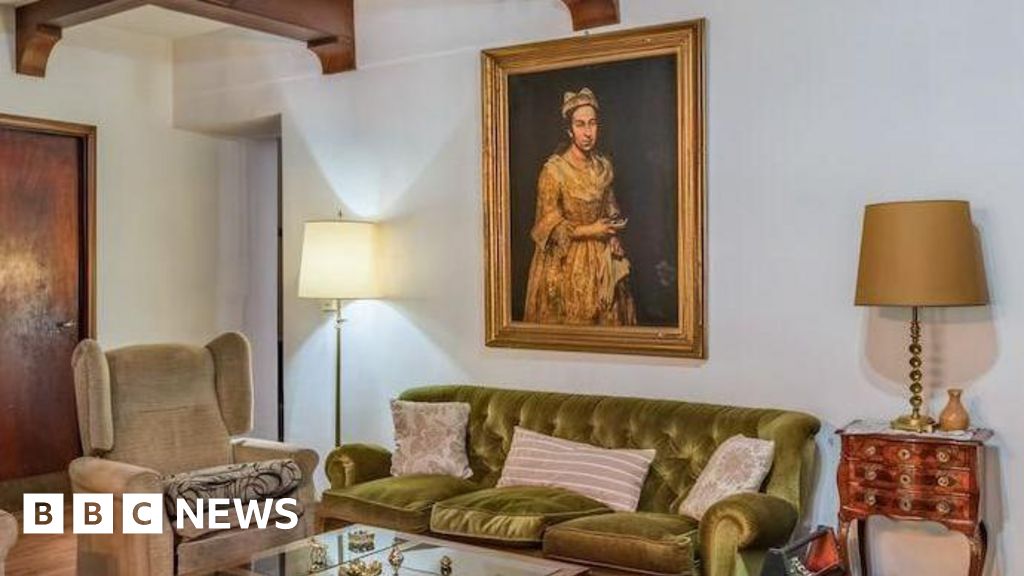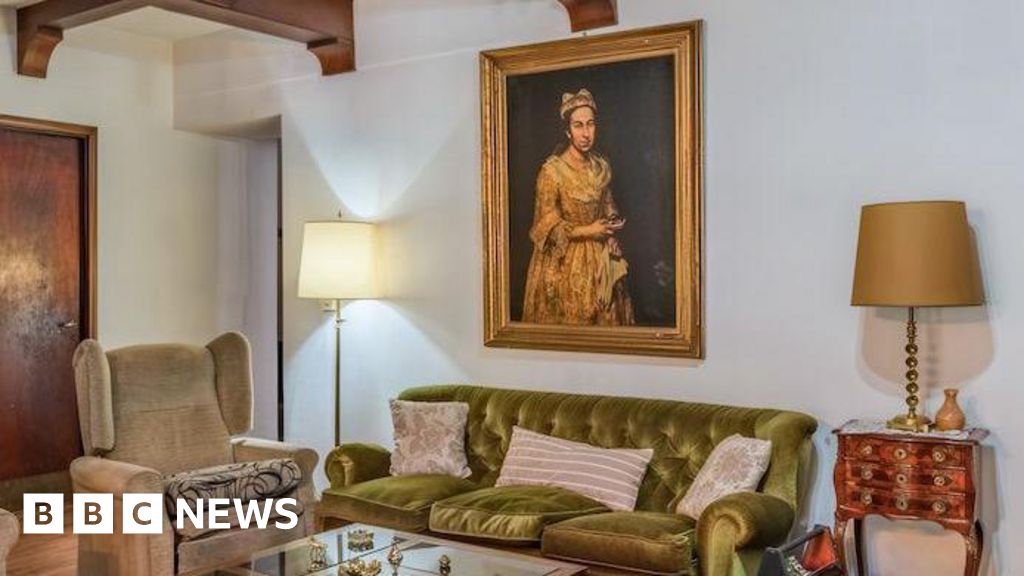The fate of 25 remarkable paintings by the illustrious Indian artist MF Husain is set to change as they prepare to be auctioned next week in Mumbai. These masterpieces have been tucked away in bank vaults since 2008, following their seizure during a legal dispute tied to a high-profile businessman accused of loan misconduct. This auction, scheduled for June 12 at the Pundole Art Gallery, will offer art enthusiasts their first chance to view the works, which embody Husain's unique vision of the 20th century, a transformative era filled with cultural shifts, technological advancements, and social change.
Husain, often referred to as India's Picasso, created these paintings as part of an ambitious collection that remained unfinished at his passing in 2011. The upcoming sale, titled "MF Husain: An Artist's Vision of the XX Century," is expected to raise an estimated $29 million (£21 million). This auction comes on the heels of an earlier record-setting sale of a Husain painting, which sold for $13.8 million at Christie's in New York.
These 25 paintings reflect a period of great enthusiasm and energy in Husain's artistic career, with each piece featuring dynamic imagery addressing significant historical events, cultural tensions, and human experiences. "When he was painting, nothing could disturb him. It didn't matter what was happening around him," recalls Dadiba Pundole, director of the Pundole Art Gallery, where many of the artworks were developed.
However, the path to this auction has been fraught with complications. In 2004, Husain had entered into a notable agreement with businessman Guru Swarup Srivastava to sell the first 25 paintings as a part of a billion-rupee deal. But following allegations of misuse of funds and subsequent investigations by the Central Bureau of Investigation (CBI), the paintings were seized as part of the ongoing legal dispute surrounding Srivastava's affairs. Documentation has revealed that the artist was unfazed by the business intricacies of the deal, valuing the art's potential visibility over its financial implications.
The paintings set for auction are not only visually striking but are rich in narrative, addressing universal themes of peace, societal disparities, conflict, and human resilience. Among the pieces, one evokes a call for dialogue among nations, while another juxtaposes Charlie Chaplin with a rocket launch, emphasizing the stark contrasts of fortune and misfortune.
As these masterpieces step out from obscurity, they not only represent a pivotal point in Husain's legacy but signify a reclaiming of cultural heritage, craft, and artistic memory that had long been overshadowed by legal and commercial turmoil. In this moment, the intricate relationship between art, ownership, and cultural expression stands illuminated, paving the way for discussion on the legacies of artists and the importance of their work in today’s society.
Husain, often referred to as India's Picasso, created these paintings as part of an ambitious collection that remained unfinished at his passing in 2011. The upcoming sale, titled "MF Husain: An Artist's Vision of the XX Century," is expected to raise an estimated $29 million (£21 million). This auction comes on the heels of an earlier record-setting sale of a Husain painting, which sold for $13.8 million at Christie's in New York.
These 25 paintings reflect a period of great enthusiasm and energy in Husain's artistic career, with each piece featuring dynamic imagery addressing significant historical events, cultural tensions, and human experiences. "When he was painting, nothing could disturb him. It didn't matter what was happening around him," recalls Dadiba Pundole, director of the Pundole Art Gallery, where many of the artworks were developed.
However, the path to this auction has been fraught with complications. In 2004, Husain had entered into a notable agreement with businessman Guru Swarup Srivastava to sell the first 25 paintings as a part of a billion-rupee deal. But following allegations of misuse of funds and subsequent investigations by the Central Bureau of Investigation (CBI), the paintings were seized as part of the ongoing legal dispute surrounding Srivastava's affairs. Documentation has revealed that the artist was unfazed by the business intricacies of the deal, valuing the art's potential visibility over its financial implications.
The paintings set for auction are not only visually striking but are rich in narrative, addressing universal themes of peace, societal disparities, conflict, and human resilience. Among the pieces, one evokes a call for dialogue among nations, while another juxtaposes Charlie Chaplin with a rocket launch, emphasizing the stark contrasts of fortune and misfortune.
As these masterpieces step out from obscurity, they not only represent a pivotal point in Husain's legacy but signify a reclaiming of cultural heritage, craft, and artistic memory that had long been overshadowed by legal and commercial turmoil. In this moment, the intricate relationship between art, ownership, and cultural expression stands illuminated, paving the way for discussion on the legacies of artists and the importance of their work in today’s society.

